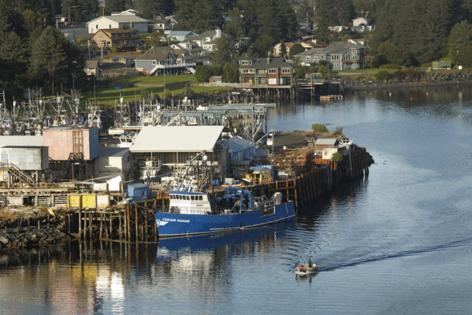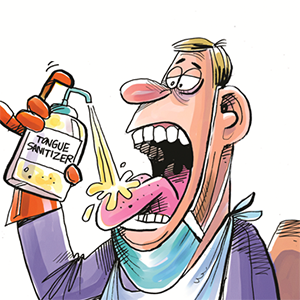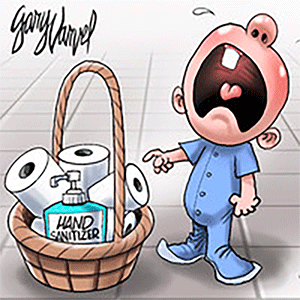Federal cuts endanger 'critical' safety programs for Alaska's commercial fishermen
Published in News & Features
ANCHORAGE, Alaska — Recent cuts to the U.S. Department of Health and Human Services could end programs that are “critical” for commercial fishing safety in Alaska, according to the Alaska Marine Safety Education Association, which receives funding from the National Institute for Occupational Safety and Health.
The federal institute, known by the acronym NIOSH, is responsible for counting the number of commercial fishermen accidents and fatalities and providing funding for commercial fishing safety training. The director of the Alaska Marine Safety Association, also known as AMSEA, said that the funding for those safety programs saves millions of dollars every year by reducing the need for costly Coast Guard search and rescue operations.
Teaching fishermen safety skills does not completely eliminate fatalities in what is still a dangerous profession — but it has reduced them by roughly 80% since NIOSH first introduced its commercial safety fishing programs in 1985, according to AMSEA director Leann Cyr.
Dozens of lives have been saved thanks to federally funded training and research programs, Cyr said.
Late last month, hundreds of NIOSH staff lost their jobs as the U.S. Department of Health and Human Services eliminated thousands of positions.
“We started getting goodbye letters from our NIOSH partners that we have been working with for years,” said Cyr. “So, very distressing.”
There were warning signs even before the staff were fired. Earlier this year, Cyr said federal funding for commercial fishing safety programming was frozen, and AMSEA stopped hearing from NIOSH in response to requests for data it collects.
AMSEA gets roughly $750,000 annually in federal funding to cover the cost of safety trainings.
“When you look at how expensive it is for the U.S. Coast Guard to go perform a search and rescue — even for a couple minutes, for them to have a helicopter searching — when you look at that, it has to be one of the best-saving investments out of any program I can imagine,” said Cyr.
The changes come as Alaska’s commercial fishing industry is already facing a multipronged crisis stemming from changes to fish populations and closures of processing facilities, among other threats.
AMSEA uses the federal funding it receives to subsidize trainings that are mandated by the Coast Guard for commercial fishing vessels, including on how to respond to emergency situations at sea.
Without those trainings, “fishermen might be stuck at the dock or they’ll be fishing illegally,” said Cyr.
Commercial fishing vessels must be examined every five years. “To pass that vessel exam, you need a drill card on a boat,” added Cyr.
Alaska’s Republican U.S. senators said they were working to reinstate some positions and funding for the institute.
Sen. Dan Sullivan has been in contact with the office of Health Secretary Robert F. Kennedy Jr. “to highlight the importance of NIOSH’s commercial fishing safety program to Alaska’s economy,” said Sullivan spokesperson Amanda Coyne.
Coyne said the commercial fishing safety program was “consistent with President Donald Trump’s day-one Alaska-specific executive order.” That order, which focused on Alaska’s natural resource industries, mentioned oil, gas and timber but made no mention of Alaska’s commercial fisheries.
Coyne also said that Sullivan had asked Kennedy if the “duties and functions of NIOSH have been or will be reassigned within the Administration for a Healthy America,” a new initiative led by Kennedy through which the Department of Health and Human Services was being reorganized.
“Because the reorganization is ongoing, the senator’s office has not yet received a clear answer, but will continue to press for one,” Coyne said.
Cyr said she had hoped that NIOSH would be reconstituted under the Administration for a Healthy America, “but it appears that that’s not part of the plan,” she said. “They fired almost everybody, and absolutely everyone in the commercial fishing program.”
Even if staff and funding are eventually reinstated, a break in continuity could create disruptions that will be difficult to address later on.
“We have instructions all over the state and all over the country, and they need to keep teaching to stay fresh,” said Cyr. “It’s not just about jobs. It’s really important training infrastructure.”
In a written statement, Sen. Lisa Murkowski said “NIOSH employees have systematically advanced worker safety across virtually every industry in Alaska for the last three decades, particularly in commercial fishing.”
“I’ve engaged with Secretary Kennedy regarding the HHS reorganization and plan to continue those discussions in the near future,” Murkowski said.
In a statement, GOP U.S. Rep. Nick Begich III said his office “is working with the administration to get additional information regarding the proposed reductions to NIOSH funding and determine what direct impacts such revisions could have.”
_____
©2025 Anchorage Daily News. Visit at adn.com. Distributed by Tribune Content Agency, LLC.







Comments